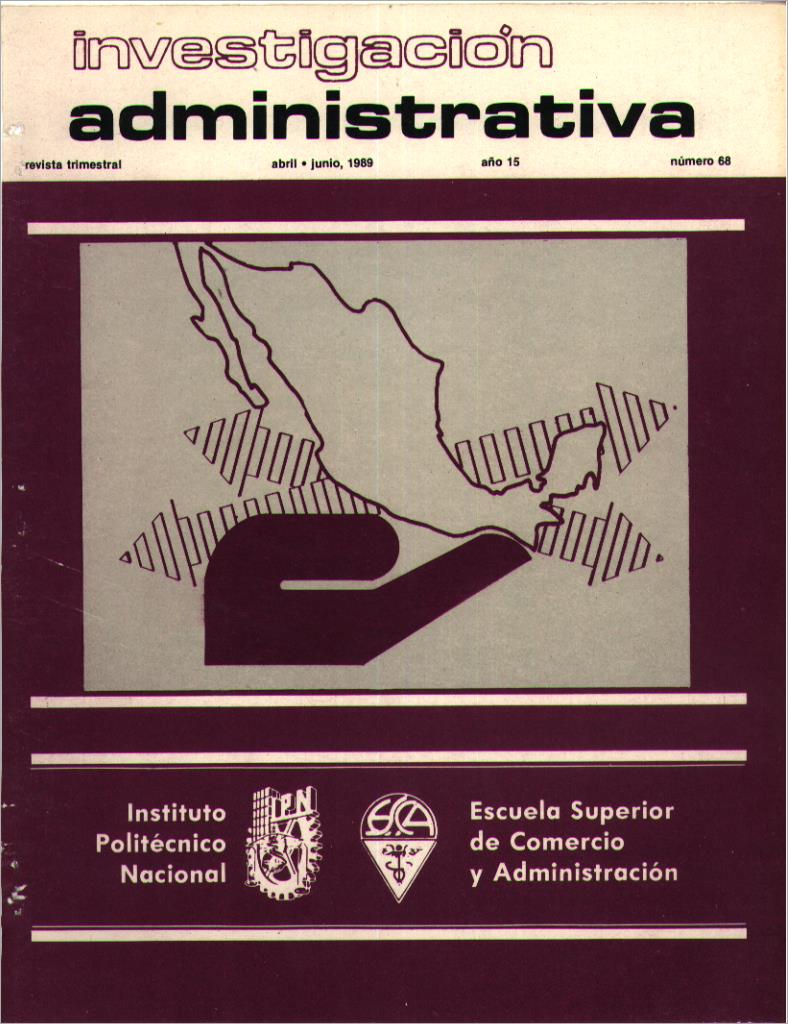Television advertising and its relationship with consumption habits of products that are harmful to health
Main Article Content
Abstract
Article Details

This work is licensed under a Creative Commons Attribution-NonCommercial 4.0 International License.
References
Aguilar, M.J.E. (1987). “La Difícil Lucha Contra el Tabaco'*, Consumidor 130 (Diciembre), 34-35.
Aispiri, J.J.D. (S/F), “Problemática Social y Sanita
ria en el Tratamiento del Tabaquismo”, España, Editorial Centro Coordinador de las Drogadependen- cias, 5-14.
Akers, R.L: M.D. Krohn; L.L. KaduceyM. Radose- vich (1979), “Social Learning and Deviant Behav
ior: A Specific Test of a General Theory”, Ame rican Sociological Review, 44 (August), 636-655.
Bandura A. y R.H. Walters (1985), “Aprendizaje So
cial y Desarrollo de la Personalidad 8o Edición, Madrid, Editorial Alianza, 57-112.
Barnes, G.Mi y M.P. Farrell y A Cairns (1986), “Parental Socialization Factors and Adolescent Drinking Behaviors”, Journal of Marriage and the Family, 48, 27-36.
Bearden, W.O: R.G. Netemeyer y J.E, Teel (1989), “Measurement of Consumer Susceptibility to In terpersonal Influence”, Journal of Consumer Re search, 15 (March), 473-481.
Beltramini, R.F. (1988), “Perceived Believability of Warning Label Information Presented in Cigarette Advertising”, Journal of Advertising, 17 (1), 26-32.
Bloom, P.N. y M.J. Silver (1976), “Consumer Educa tion: Marketers Take Heed”, Harvad Business Ri- view, 54 (February), 149-150.
Brown, S.A: N.S. Goldman; A. Inn y L.R. Anderson (1980), “Expectations of Reinforcement from Al cohol: Their Domain and Relation to Drinking Patterns”, Journal of Consulting and Chinical Psy chology, 48, 419-426.
Bustamante, ME. (1974), “El Alcoholismo y sus Con secuencias Sociomédicas: Aspectos Sociomédicos”, Gaceta Médica de México, 107, 227.
Buzzell, R.D; y E.M. Nourse (1979), “Mercadotecnia,
Un Análisis Contemporáneo”, México Editorial Continental, 596.
Caballero, M; yJ.E. Chan (1986), “Gasto Publicitario en Televisión durante 1985”, Consumidor, 117 (Nov.), 11-13.
Cabildo H.M; M.S. Martínez y J.M, Juárez (1969), “En cuesta sobre Hábitos de Ingestión de Bebidas Al cohólicas”, Salud Pública de México, 11, 759.
Gasswell, S; L.L. Gilmore; y P, Brasch (1988), “What Children Know About Alcohol and How They Kno- wit”, Britsh Journal of Adiction, 82 (2), 223-227.
Clcyton, R.R; y W.B. Lacey (1982), “Interpersonal In terpersonal Influences on Male Drug use Inten tions”, International Journal of the Addictions, 17, 655-666.
Consumidor (1986), “Morir por una Fumada”, Con sumidor 110 (Abril), 15-19.
Churchill, G.A.; y G.P. Moschis (1979), “Television and Interpersonal Influences on Adolescent”, Jour nal of Consumer Research, 6 (June), 23-35.
Daly, P.A. (1976). “The Response of Consumers to Nutrition Labeling”, The Journal of Consumer Affairs, 10, 170-178.
Davis, K.R. (1988), “Administración en Mercadotéc- nia”, México, Editorial Limusa, 492-600.
Domínguez, H.M.L. (1988), “Influencia del Proceso de Socialización en el Comportamiento de Adoles centes”, s/p. 1-3.
Duffy, M. (1982), “The Effects of Advertising on the Interindustry Distributions in Economic Re search”, Explorations in Economic Research, 3 (Winter), 21-75.
Eron, L.D; L.R. Huesmann; M.M. Lefkowítz; y L.O. Waldor (1972), “Does Television Violence Cause Aggression”, American Psychologist, 27 (4), 253-263.
Expansion (1987), “Las Humeantes Cifras del Taba
co”, Expansion, 18, 9.
Fischer, L. (1988), “Mercadotecnia”, México, Editorial Interamericana, 316-365.
Franke, G; y G. Wilcox (1987), “Alcoholic Beverage Advertising and Consuption in the United States, 1964-1984”, Journal of Advertising, 16 (3), 23-30. Guerra, A.J. (1975), “El Alcoholismo en Mexico”,
México, Editorial Fondo de Cultura Económica, 20. Hastak, M; y J.C. Olson (1989), “Assesing the Role of
Brand - Related Cognitive Responses as Mediators
of Communication - Effects on Cognitive Structu
re”. Journal of Consumer Research, 15 (4), 444-455. Heinz, K.S; y U. Bartmann (1977), “Psicología del Fu
mar”, Barcelona, Editorial Arder, 33-128.
Horrocks, J.E. (1984), “Psicología de la Adolescencia”,
México, Editorial Trillas, 17-32.
Hundleby, J.D; y G.W. Mercer (1987), “Family and
Friends as Social Environments and Their Rela tionship to Young Adolescents Use of Alcohol, Tabacco, and Marijuana”, Journal of Marriage and the Family, 49, 151*164.
Hulse, S.H; 11. Egeth; y J. Deese (1982), “Psicología del Aprendizaje”, México, Editorial McGraw-Hill, S.A; 21-126.
INCO (1987), “Alcoholismo”, Kits sobre Alcoholismo, INCO, Mayo, 11-22.
INCO (1987), “Tabaquismo”, Kits sobre Tabaquismo, INCO, Mayo, 8-9.
Johnston, L.D; y P.M. O’Malley (1986), “Why do the Notion's Students use Drugs and Alcohol? Self-re ported Reasons from Nine National Surveys”. Jour nal of Drug Issues, 16, 16-29.
Lefkowitz, M.M; R.R. Blake; yJ.S. Mouton (1955), “Status Factors in Pedestrian Violation of Traffic Signals”, Journal of Personality and Social Psicho- logy, 51, 704-706.
Ley General de Salud (1989), Mexico, Editorial Libros económicos, s/p.
Machleit, K.A; y R.D. Wilson (1988), “Emotional Fee lings and Attitude Toward the Advertisement: The Roles of Brand Familiarity and Repetition”, Journal of Advertisings, 17 (3), 27-35.
Márquez, A.I). (1979), “Subconsumismo”, Uno Más Uno, 21 de Die; 4.
Mas, C.C: A. Manrique; C. Varela; y H. Rosousky (1986), “Variables Médicas y Sociales Relaciona das con el Consumo de alcohol en México”, salud Pública de México, 28 (5), 473-478.
McDavid, J.W: y H. Harari (1979), “Psicología y Con ducta Social”, México, Editorial Limusa, 143-144.
McNeill, D.L; y W.L. Wilkie (1979), “Public Policy
and Consumer Information: Impact of the New Energy Labes”, Journal of Consumer Research, 6
(1), 1-11.
Molina, P.V; y L.M. Sánchez (1982), “El Alcoholismo

